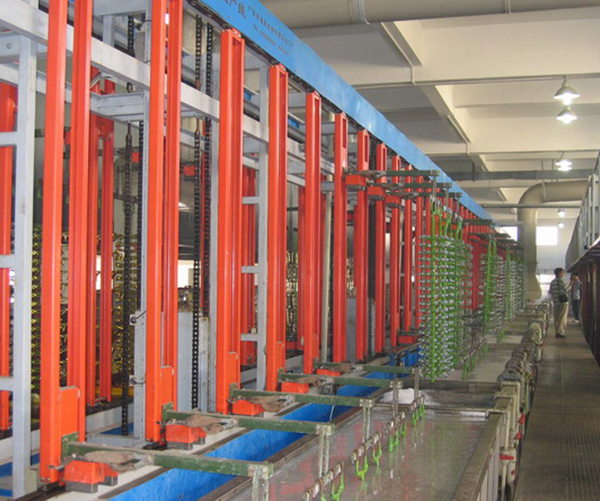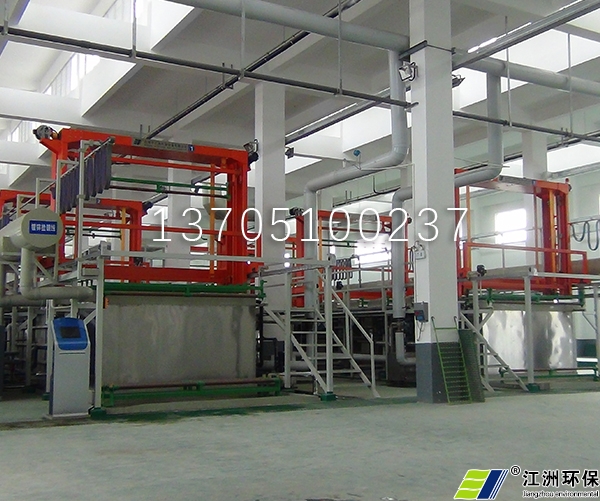Zero discharge of electroplating wastewater The system mainly uses membrane separation technology. Because membrane separation technology has the advantages of low energy consumption, no phase change, no pollution, and high separation efficiency and concentration times, appropriate membrane separation is used to concentrate the rinse water of electroplating solution, and the concentration times can reach 100 times (in volume). The concentrated solution after membrane separation returns to the electrolytic cell after proper treatment to reach a certain nickel ion concentration, that is, nickel recovery. The permeate of the membrane system, that is, pure water, can be directly returned to the bath of the plating parts, thus realizing zero discharge of electroplating wastewater. Therefore, the zero discharge system of electroplating wastewater not only does not cause secondary pollution, but also recovers harmful heavy metals in the wastewater, turning harm into treasure and reusing water resources.
A zero discharge treatment method for electroplating wastewater includes:
Step a: Collect the pre electroplating wastewater into the organic wastewater collecting well. When the level of the collected electroplating wastewater reaches the design height, start the lift pump and pump it into the regulating tank;
Step b: The copper plating cleaning water, nickel plating cleaning water and chromium plating cleaning water are pumped into the chemical reaction tank respectively by their respective lift pumps. The copper plating cleaning water, nickel plating cleaning water and chromium plating cleaning water are respectively the waste water from the first cleaning tank during the tank turning cycle. The particle size of heavy metal ions in the waste water is increased by chemical precipitation to form the hydroxide or sulfide of the metal, Precipitate at the corresponding pH value;
Step c: the precipitated wastewater containing high concentration of metal salts is pumped into the low-temperature evaporation equipment to obtain solid metal salts, the distilled water flows back into the regulating tank, and the supernatant of each chemical sedimentation tank is pumped into the regulating tank;
Step d: The wastewater from the regulating tank flows into the hydrolysis acidification tank → anoxic tank → contact oxidation tank → circulating tank of the external membrane bioreactor in turn, and then is pumped into the tubular microfiltration membrane system installed outside the biological treatment tank by the large flow circulating pump and the electroplating wastewater zero discharge pump. The tubular microfiltration membrane system filters the wastewater in a cross flow under the promotion of the circulating pump, Filtered permeate flows into microfiltration clean water tank;

Step e: the first high-pressure pump absorbs water from the microfiltration clean water tank, pumps it into the reverse osmosis membrane separation system, the reverse osmosis permeate water enters the reuse water tank, replenishes the electroplating production line cleaning water, the concentrated water enters the concentrated water tank, the second high-pressure pump absorbs water from the concentrated water tank, pumps it into the reverse osmosis circulating concentration system, the reverse osmosis permeate water enters the microfiltration clean water tank, and the concentrated water returns to the concentrated water tank, After the concentration reaches the design concentration, pump it into the low-temperature evaporation equipment;
Step f: evaporate and purify heavy metals, recover heavy metal salts, and return distilled water to the regulating tank.
Process characteristics of electroplating wastewater zero discharge system:
The electroplating wastewater zero discharge system adopts advanced special membrane separation technology, which is simple in process, stable and reliable in operation, and high in treatment efficiency.
The zero discharge system of electroplating wastewater gives full play to the advantages of special membranes. After the electroplating and circuit board wastewater is treated by this process, valuable metal ions (nickel, copper, chromium, etc.) in the wastewater can be recycled after membrane concentration. The permeate of the wastewater after membrane treatment can be reused as process water, which not only saves costs but also realizes zero discharge of wastewater.







